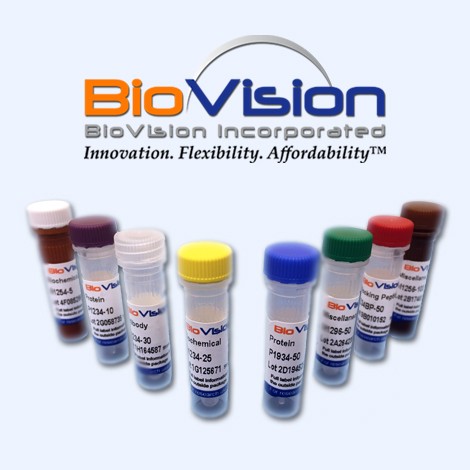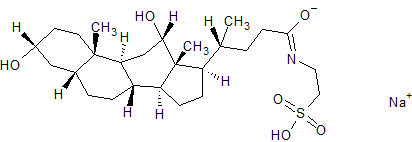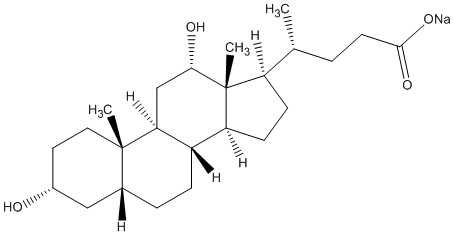 |
Triton ® X-114 (10%) Solution (BioVision Inc.)
A solution (10%) of Triton® X-114 in de-ionized water. |
Detergents
Detergents are amphipathic molecules that contain both polar and hydrophobic regions which allow them to act as solubilizing agents. The polar region can form hydrogen bonds with water while the hydrophobic region tends to aggregate into micelles and associate with hydrocarbon and nonpolar domains. The fundamental properties of detergents include: the critical micellar concentration (CMC, the concentration above which micelles form); the Kraft Point (the temperature at which an equilibrium exists between the insoluble crystalline state, the monomeric detergent and the micellar state; this temperature is usually equal to the critical micellar temperature, CMT); the aggregation number (the number of detergent molecules within a micelle, which equals micellar MW/monomeric MW); the Hydrophile-Lipophile Balance (HLB, a measure of the hydrophilic nature of the detergent. An HLB between 12-20 is preferred for non-denaturing solubilization and > 20 for extrinsic protein solubilization); For non-ionic detergents, the Cloud Point is the temperature above the CMT where detergents become cloudy forming a detergent-rich phase and an aqueous layer. This is useful to separate integral membrane proteins from hydrophilic proteins after first solubilizing at low temperature (e.g. Triton X-114 has cloud point = 23 °C).
Detergents can be grouped into a few main classes: Ionic detergents ; Non-ionic detergents and Zwitterionic detergents. Ionic detergents have a charged headgroup (anionic or cationic) and are useful for the complete disruption of cells and denaturation of proteins for separation during SDS-PAGE. These can include anionic detergents like SDS, cationic detergents such as CTAP and anionic bile salts such as deoxycholate. Non-ionic detergents, often called non-denaturing detergents, are useful in the solubilization of membrane proteins since they are able to break lipid-lipid and lipid-protein interactions, but have a limited ability to break protein-protein interactions. They include low CMC detergents such as Triton X-100 and a NP-40 alternate which cannot be dialyzed away, uncharged bile salts like Big Chap (which can be dialyzed) and the very dialyzable (CMC ~ 25 mM) alkyl glucosides such as octyl glucopyranoside. Zwitterionic detergents protect the native state of proteins without altering the native charge of the protein molecules. In addition to solubilization properties alone, zwitterionic detergents are very useful for isoelectric focusing and 2D electrophoresis. Many synthetic zwitterionic detergents are known as sulfobetaines. Sulfobetaines retain their zwitterionic characteristics over a wide range of pH and are widely used for 2D gel electrophoresis.Non-detergent Sulfobetaines (NDSB’s) are a family of zwitterionic compounds that possess hydrophilic groups similar to the zwitterionic detergents but with much shorter hydrophobic chains that cannot aggregate to form micelles. Although not considered as detergents, NDSB’s may improve the yield of membrane, nuclear and cytoskeletal proteins when used with detergents. The short hydrophobic groups combined with the charge neutralization of the sulfobetaine group results in obtaining higher yields of the membrane proteins. NDSB’s also help reduce aggregation and aid in refolding proteins found in inclusion bodies and bacterial expression systems. The NDSB’s are zwitterionic over a wide pH range, easily removed by dialysis and do not absorb significantly in the near UV range.
Sample Preparation Kits
Cell Lysis Agents
Crosslinking Agents
Detergents
Dialysis Tubes
Phosphatase Inhibitor Cocktails
Protease Inhibitor Cocktails
Protein Enrichment Tools
Protein Labeling
Protein Purification
Protein Quantitation Kits
Spin Desalting Column
Tag Antibodies
Yeast Mitochondria
Detergents Products:
 |
Tergitol™, 15-S-9, MegaPure™, Detergent 10% solution (BioVision Inc.)
Tergitol™ 15-S-9 is a linear non-ionic surfactant containing a secondary ethoxylated alcohol. Useful for solubilization of integral membrane proteins such as phosphatidylinositol kinase. |
 |
Taurocholic acid sodium salt (BioVision Inc.)
Taurocholic acid sodium is a bile acid conjugate with detergent properties. This anionic detergent is useful for the solubilization of lipids and membrane-bound proteins. |
 |
Sulfobetaine 3-16 (BioVision Inc.)
A zwitterionic detergent A zwitterionic detergent useful for solubilization of membrane proteins. Retains its zwitterionic character over a broad pH range. |
 |
Sodium taurodeoxycholate (BioVision Inc.)
Taurodeoxycholic acid is a taurine-conjugated form of the secondary bile acid deoxycholic acid. Acts as a useful detergent for the solubilization of lipids and membrane–bound proteins. |
 |
Sodium deoxycholate A bile acid detergent (BioVision Inc.)
Deoxycholic acid sodium is a water-soluble, anionic detergent useful for extraction of membrane receptors and other plasma membrane proteins and for nuclei isolation. |
 |
SDS Solution : 10% SDS solution (BioVision Inc.)
A 10% solution of sodium dodecylsulfate (SDS) in water. |
 |
Pluronic® F-127, MegPure™ Detergent, 10% Solution, Sterile-Filtered (BioVision Inc.)
Pluronic® F-127 is a non-ionic detergent useful for isolation of membrane proteins. It has been found to facilitate the solubilization of water-insoluble dyes and other materials in physiological media. |
 |
Pluronic® F-127 (BioVision Inc.)
A non-ionic detergent Pluronic® F-127 is a non-ionic detergent useful for isolation of membrane proteins. It has been found to facilitate the solubilization of water-insoluble dyes and other materials in physiological media. |
 |
Octyl-β-D-thioglucopyranoside (BioVision Inc.)
A non-ionic detergent A non-ionic detergent useful for solubilizing membrane-bound proteins in their native state (CMC = 9 mM). |


 We're here to help
We're here to help  High Quality Guaranteed Product
High Quality Guaranteed Product